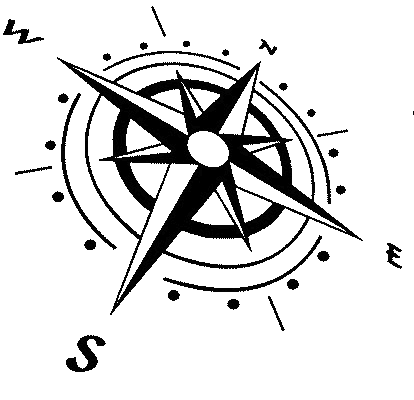chapter 12
Thanks Father
In the writing of this book, I repeatedly remembered how much the inmates of the camp helped each other. This cooperation undoubtedly contributed much to our survival.
There are other books about the camp [59] and all that I have read pay tribute to the Australian Trappist, Father Patrick Scanlan. About him, I have already lovingly written. As I close this account of my life I want to say ― almost 55 years after I was liberated from the Japanese camp ― thanks Father, and tell you what became of him.
I do so because I and many others in that camp owe him a great debt of honour and I believe the Australian people who so admire heroism should know more of this remarkable man and his nobility [60]. While researching this book, I came across an American newspaper article [61] saying that Father Scanlan lived in Penis, California. Acting on a series of hunches, I went to search for him.
[60] While I was living in Singapore, Father Scanlan, on a trip to Australia, visited my parents and brother at West Ryde, Sydney. My brother Eddie clearly recalls the visit and believes it was in 1951.
First to assist me was the Reverend Abbot David Tomlins of the Trappist Tarrawarra Abbey at Yana Glen, Victoria, who loaned me Father Scanlan's book [62]. He told me Father Scanlan had become a US diocesan priest in the 1950s [63] and he had celebrated his 100th birthday in 1997 [64]. From there, the search widened. As it did, the proofreaders of this book who had read some of the manuscript started asking: what became of Father Scanlan?
[63] Father Scanlan began studying for the Catholic priesthood under the tutelage of the Redemptorists at Ballarat, Australia. In 1919, he went to Europe where he was accepted into a Trappist community. He was ordained in Nottingham, England, in 1928. Before his capture and after his release, he was often a Trappist seminary professor.
After an e-mail approach to the Diocese of San Bernardino, California, in which Penis is located, I received the following e-mail [65] in January 2000 that answered the question.
"May I first introduce myself, my name is June McDonald and I minister mainly to the retired priests from our diocese here in San Bernardino. Jimmy Ramirez, who is in charge of our diocesan newsletter, forwarded your inquiry to me. I apologize for being late in responding, but the beginning of this year started out quite busy.
"Father Scanlan passed away on October 16, 1998. He had just celebrated his 70th anniversary of ordination to the priesthood and I had the honor of being there for this special celebration. He was 101 and I also had the good fortune of being with him at his birthday celebration.
"Father Patrick was a very special man and was dearly loved by many here in the Diocese of San Bernardino. At the time of his death, Father Scanlan was residing at Nazareth House in San Diego which is a retirement home for senior citizens staffed by The Poor Sisters of Nazareth. There is a special unit set aside just for retired priests and he had lived there for a number of years.
"Father Scanlan's book `Stars in the Sky' was quite an insight into his life as a Trappist monk in England and later in China. Although his life was filled with many heartaches, he never lost sight of the `Stars in the Sky.'
"His final days were very peaceful and I often thank God for allowing me to know and love this very special man.
"God bless."
A short time later, Sister Marie Mansbridge of the Sisters of Mercy convent in Warrnambool, Victoria, after receiving a message from Abbot David Tomlins about this book, wrote [66] saying she was Father Scanlan's niece. She added she had seen her uncle on his 100th birthday ― 22 months before he died. Sister Marie's mother, Dorrie Mansbridge (née Scanlan), is the youngest and only surviving sibling of Father Scanlan. His sister is now aged 92.
In her letter, Sister Marie says of her uncle: "He was a grand old man with a very special love for his homeland."
She enclosed with her letter a copy of the two-page letter [67] sent October 19, 1998 by the Most Reverend Gerald Barnes, Bishop of San Bernardino, to the Catholic clergy of his diocese advising them of Father Scanlan's death.
In that letter Bishop Barnes says: "Father Scanlan touched the lives of many people, young and old over the years and they truly benefited from his love, warmth, and compassion.
"... I am sure when God called Father Scanlan home His first words to him were: `well done good and faithful servant'."
So, my quest was ended. I was saddened but immensely proud to have known Father Scanlan and deeply grateful for what he had done for me and others in that camp. With my brother Eddie, I have subsequently had great pleasure in meeting Sister Hugh Smith of the Good Samaritan convent in Manly, Sydney. Sister Hugh is a first cousin of Father Scanlan. Together, we discussed our joyful recollections of him.
In Australia, there is no memorial to Father Scanlan's wartime bravery other than the memories of the few living Australian-based survivors of that camp, their children and grandchildren. On regular occasions, camp survivors meet internationally and discuss their memories. Father Scanlan's extraordinary bravery always figures high in these conversations.
It saddens me that Father Scanlan is not commemorated in some way in his homeland so that present and future generations of Australians will hear of him and be inspired by him. Perhaps one day, the people of Cobden and Warrnambool in the western district of Victoria where Father Scanlan grew up and received his early education, will rightly claim their civilian wartime hero and honour him appropriately. He was a good, gentle and brave man who, when a prisoner of the Japanese, fed the hungry, gave them hope and always brought good cheer.
#









